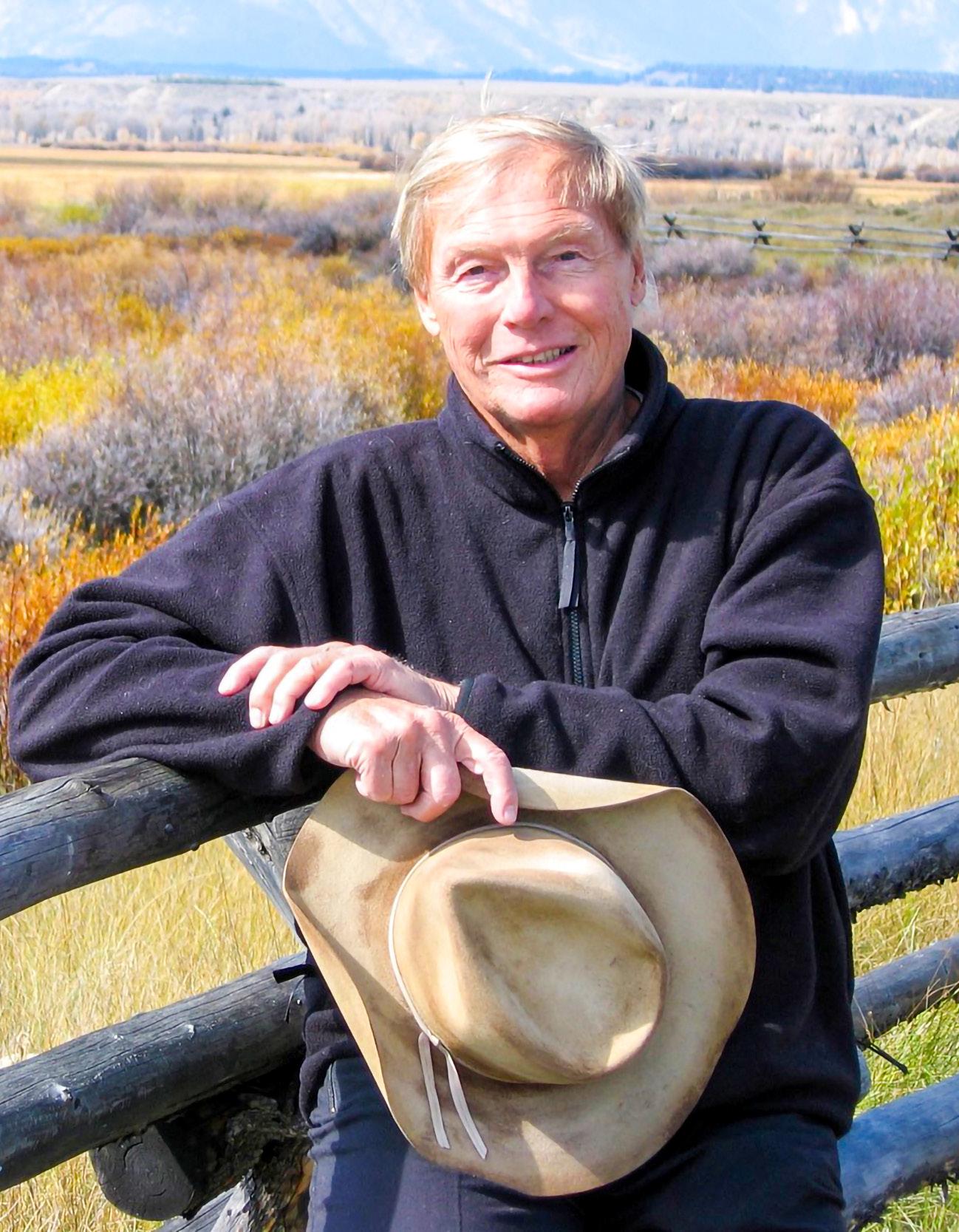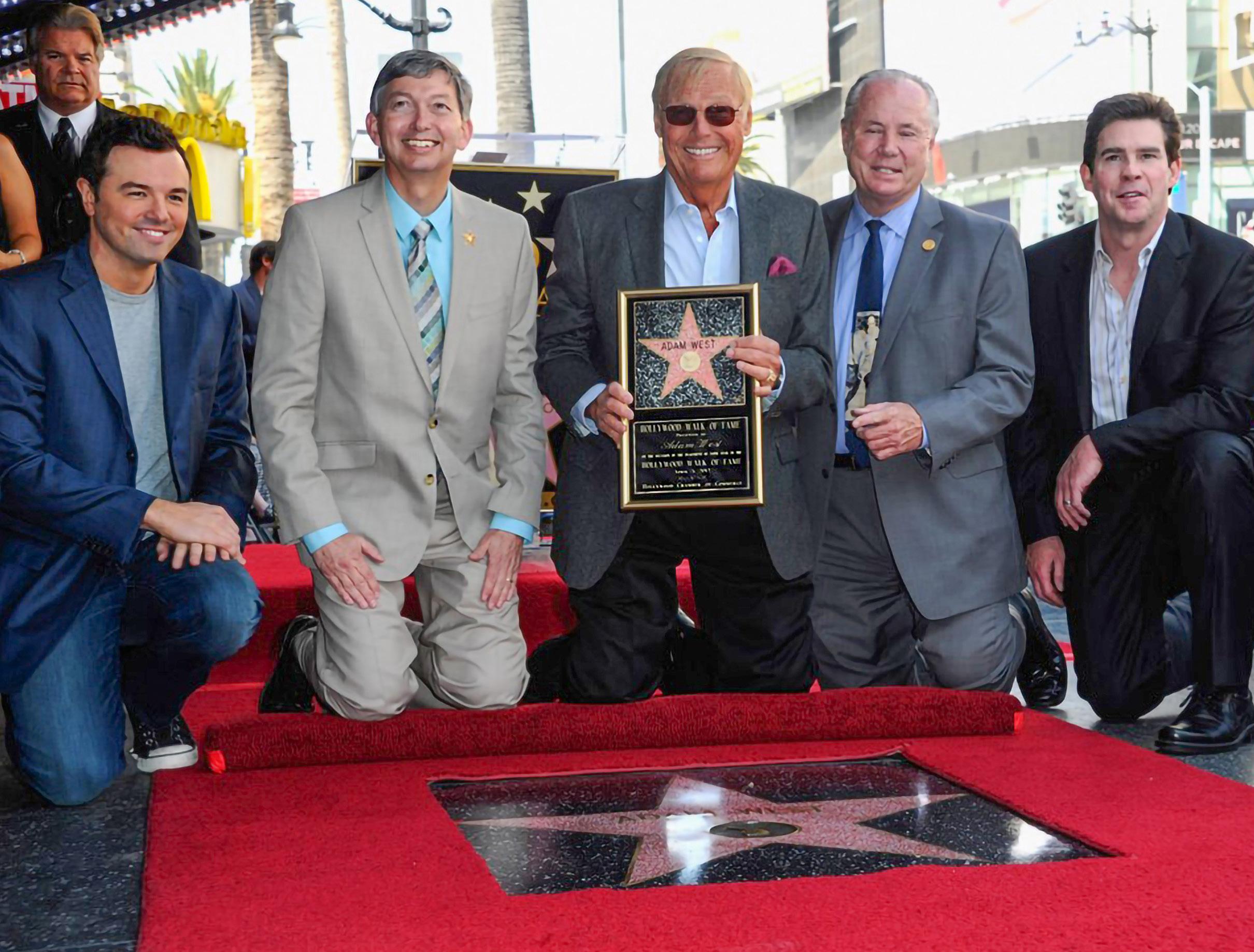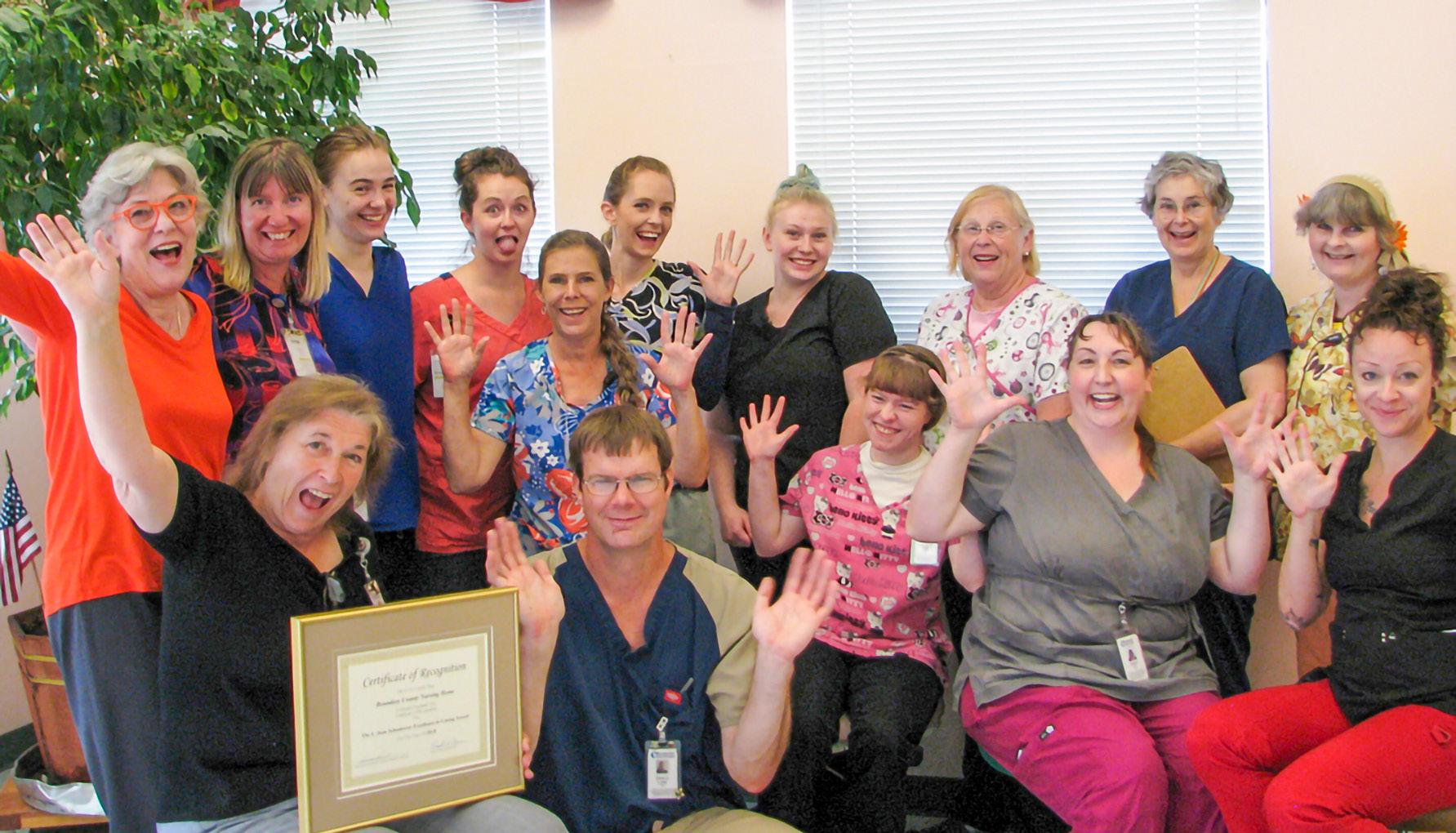
13 minute read
FEATURE STORY
SOMETIMES A CAREER STARTS WITH A DREAM.
When he was a young boy growing up on a farm in Walla Walla, Washington, Adam West, born William West Anderson, went to the movies every Saturday afternoon. He loved it, spending all day caught up in the fantasy world of cowboys and Indians. He knew this mythical place called "Hollywood," where the movies were made, was where he wanted to be someday.
West knew a little about the place from his mother, a pianist and opera singer, who had gone to Tinseltown on a scholarship. She gave up her career when his brother was born. West never forgot how different she was when she came back to the farm after his brother's birth. Depression drove her to drink. As a result, he vowed to make it in the world she couldn’t.
West’s father worked the farm with no illusions of grandeur. When the teenaged West, who was class president of his high school, and a star athlete, told his father what he wanted to do with his life, his father disapproved. No matter. West had made up his mind. Needing a backup plan in case he failed, he delayed his trip to Hollywood and enrolled at Whitman College in Walla Walla, graduating with a degree in Literature in 1951. That same year he married Billie Lou Yeager and picked up work as a disc jockey at a local radio station before moving to Northern California and enrolling at Stanford University for a little over a month. An audition led to work for a newspaper chain where West did voice work and wrote shows.
Drafted into the military, West served his time producing U.S. Army television shows. When his two-year service ended, he went to New York and worked days as a milkman and nights as a master of ceremonies. At this point in his career, his deep smooth voice was his biggest asset. The Gypsy life continued when West moved to Hawaii, working in theater, television, commercials, and directing TV shows. After appearing in a production of “Picnic,” a Hollywood agent contacted him. West’s dream had never been far from his thoughts. He had divorced and remarried and was the father of two young children. He had a friend take a picture of him sitting on a ragged old horse, dressed as a cowboy. He sent the photo to Warner Brothers who, after receiving it, called him to come to the studio. After finding a place for his family to live, West went to the Warner lot in Burbank,
California, and did a reading. The studio immediately signed him to a one-year contract. West, 31, was ecstatic. It had been a long road to Hollywood, but now he was working at the same studio that made the classic film “Casablanca.”

Growing up on a farm served as training for the actor now known professionally as Adam West. Cast in numerous westerns, very popular at the time, West was skillful on a horse and looked good in fights and shootouts. He co-starred in such hit television shows as “Lawman,” “Sugarfoot,” “Colt.45” and “Cheyenne.” He had a recurring role (as a different character) in the two popular series “77 Sunset Strip” and “Maverick.” All in all, West appeared in 15 different television programs along with debuting in the film “The Young Philadelphians.”
Things were going well, and then, they weren’t. Warner Brothers declined the option for a second year on West’s contract. So he freelanced, appearing on television in “Bonanza,” “The Rifleman” and “Perry Mason” before landing a regular role on “The Detectives.” West showed up in “Bewitched” and then played it straight alongside The Three Stooges in the feature “The Outlaws Is Coming” in 1965. West was now a working actor making good money. But stardom seemed remote until a commercial changed his life. West was Captain Q, selling Nestle Quik in a parody of the James Bond films. He was amusing and nonchalant. Apparently, executives at ABC saw the 30-second spot and thought West would be perfect in a new television series they were set to make.
The name of the show was “Batman.”
West, who as a kid, loved reading about the character’s exploits in comic books, was sent a script. He loved it but was concerned that he could be typecast. His agents suggested he do it, so West signed on the dotted line. Burt Ward was cast as Robin. West decided he’d play the title character with his tongue firmly in his cheek. His deadpan delivery was perfect.
At first, the producers weren’t thrilled with West's performance. They wanted an edgier Batman but came around after viewing the rushes. West still wasn’t sure what to expect. The show premiered January 12, 1966. “Batman” took off like a rocket, an overnight ratings smash and culture phenomenon. "Bat-mania" was everywhere. A Batman movie soon followed with West and Ward taking on an all-star cast of criminals led off by Frank Gorshin's Riddler. West even recorded a song as his Batman alter-ego.

Hollywood veterans wanted to be part of the show. The lineup of guest stars was impressive—including Vincent Price as Egghead, Roddy McDowall as Bookworm, Julie Newmar as Catwoman, Burgess Meredith as the iconic Penguin, George Sanders as icy Mr. Freeze and Cesar Romero as The Joker. Rumor has it that even Frank Sinatra wanted to play a villain on the show. Elizabeth Taylor, Gregory Peck and Sinatra asked to be guests in scenes


when Batman and Robin scaled a building. West channeled Basil Rathbone’s Sherlock Holmes in a comedic way when Batman played detective. He was having a ball but still worried that the role would damage his career.
By season two, the show was losing steam. West was frustrated. The program was expensive, and West heard it was losing money. He couldn’t convince the producers to accept his suggestions. He considered quitting, tired of fighting for better scripts. But he still loved playing "Bat." A new character, Batgirl, was added to try and improve the ratings. It didn’t help. "Bat-mania" had morphed into "Bat-fatigue." ABC canceled the show after 120 episodes. A fourth season looked possible when NBC contacted the producers, but the sets had already been dismantled. The cost to rebuild them made the decision easy for NBC. No more Batman.
A few months after the show was axed, West played a soldier of fortune in “The Girl Who Knew Too Much.” The film bombed with critics and moviegoers. West’s worst fear was coming true. He was being typecast because of Batman. He couldn’t escape it. He’d be on the verge of landing a good part until someone would mention the show. He was stuck, and he knew it.
George Reeves, who played Superman in the classic 1950’s television show, faced the same problem. After Superman’s cancelation in 1957, Reeves found it virtually impossible to get hired for another role. Reeves had been working in Hollywood for almost 20 years. His most notable role, though a small one, was in “Gone with the Wind.” He’d worked with James Cagney, Tyrone Power and Burt Lancaster, but none of that seemed to matter. He was Superman. Reeves was forced to don the red cape and make public appearances at fairs to make a living. He died in 1959.
West faced a similar dilemma. He was still working, but the roles were small and barely paid the bills. Things might have been different if West had accepted a chance to play James Bond in 1969, but he was wary of the role because the character is British. The role eventually went to Australian George Lazenby. A year later, West was taking almost every acting gig thrown his way, and like Reeves, started making public appearances dressed as Batman. He played the character again in a couple of animated programs. His lowest point was likely when, dressed as The Caped Crusader, he was shot out of a canon.
Racked by self-doubt, West found solace in alcohol. Perhaps he remembered his late father telling him Hollywood was a dirty place. By 1980, he accepted a role in a terrible film called “The Happy Hooker Goes Hollywood.” Needing a fresh start, West moved his family to a ranch in Ketchum, Idaho, in 1985. The house was surrounded by mountains with a stream nearby. West loved it there.
When Hollywood decided to make a new Batman movie in 1989, West was excited. He wanted another crack at the character. He’d even written a script. Michael Keaton landed the role instead. Disappointed, West realized that this was a “new” version of the character. New wasn’t him. Christopher Nolen created a Batman animated series a few years later. West played an outof-work actor who had once played a superhero. He resented being typecast. West likely recognized how closely the character resembled his own life—but not completely. West was working pretty steadily. His work ethic, inherited by example from his father, never failed him. The younger crowd in Hollywood was finally seeing that he was more than just a guy who had once run around on TV in tights, a cowl and a cape.

More work came his way. He appeared in manner. In 2012, West, with his wife and four numerous television shows, sometimes playing children standing proudly alongside him, himself. His old standby, his voice, made him was given a star on Hollywood Boulevard, very employable. He did voice-over work for but as always, he didn’t take himself seriously, cartoons: “Johnny Bravo,” “The Fairly Odd commenting that, "Now people can walk all Parents,” “Robot Chicken” and “The Simpsons.” over me." He even voiced author Ernest Hemingway. And most importantly, he found peace with the character who had, as he said, been a two-edged sword. West had gained a new His career generation of fans. Being seen as only Batman had been tough, but overall, the role gave him fame, money and recognition. He also loved had spanned showing his versatility. One of his biggest fans was writer and actor 60 years, with Seth McFarland. They met while working on an animated series. They clicked comically. appearances in McFarland wrote a pilot for West that wasn’t picked up, but when his series “Family Guy” became a hit, McFarland created a role for over 50 films West. He would play a character called Adam West—the mayor of Quahog, Rhode Island. and TV shows. The part was offbeat, quirky and hilarious. Many would describe West in the same
BonnersFerryLivingLocal.com 35
Shortly before he died in 2017, at the age of 88, West returned to his childhood home in Walla Walla to sign the door to his room. A few months later, a new street sign, Honorary Adam West Way, was unveiled near his old house. Hollywood showed its respect for West by shining the Bat signal from City Hall. His career had spanned 60 years, with appearances in over 50 films and TV shows.
Not bad for a boy who once upon a time sat in a darkened theater and dreamed of being in the movies.
John J. Raspanti is co-author (with Dennis Taylor) of "Intimate Warfare: The True Story of the Arturo Gatti and Micky Ward Boxing Trilogy," an Amazon bestseller. His article on Sugar Ray Seales (From the Dim to the Light) was included in the January 2019 edition of 253 Lifestyle Magazine. Raspanti’s second book (Blood on my Notebook: Dispatches from the world of professional boxing) is now available on Amazon.com.
THEN AND NOW
NURSING IN BOUNDARY COUNTY
By April Bennett, MSN RN Surgery Manager, Boundary Community Hospital
Nurses have been caring for the residents of Boundary County in a hospital setting since Bonners Ferry established their first hospital in 1907. Since that time, our world has been through two world wars, Vietnam, Korea and Desert Storm, as well as worldwide pandemics like the Influenza pandemic of 1918 and the current COVID-19 pandemic. Over the years the duties, education, training and roles of the nurses have evolved. Nurses consistently demonstrate their ability to adapt and change with the health-care needs of the community in which they live and work. Recognizing that good nursing care is essential to a patient’s well-being and positive outcomes, our nurses are boots on the ground, standing on the front lines ready to care for the community that they serve.

When the first hospital was established, the building had no modern facilities, creating duties for the nurse that were far beyond patient care, including carrying bedpans out of the hospital to be disposed of in buildings built for that purpose. In later years it would be the nurse’s duty to keep the fire stoked to make sure that the steam-powered elevator in the facility worked properly—much different from the duties of the nurses today.
MRS. BERTHA JOHNSON. PHOTO COURTESY OF BOUNDARY COUNTY MUSEUM
The first matron of the hospital was Mrs. Bertha Johnson, who received her training at Deaconess Hospital in Spokane, Washington. As the matron of the hospital she was the most senior nurse and was responsible for all the nurses and coordinating patient care, as well as making sure the entire facility ran efficiently. Throughout the years, hospital matrons have been replaced with superintendents, chief nursing officers, nurse managers and charge nurses.
As nursing duties and responsibilities have evolved, so has the education that nurses receive. There was no formal education for nurses until the mid-19th
BonnersFerryLivingLocal.com


Refined Aesthetics look and feel your best



century. In 1873 the first three organized professional schools for nursing were opened, and by 1960 over 172 college-based nursing programs had emerged. Many early nurses lived in the hospital in nursing quarters and received on-the-job training and hospital diplomas. Boundary County had many local ladies who received training at the hospital as licensed practical nurses.
Today Boundary Community Hospital employs nurses with various educations and backgrounds in nursing. Many hold Associate of Science degrees, Bachelor of Science degrees, and some with Master of Science degrees in nursing. They serve as staff nurses, quality officers, primary care, managers and specialty nurses. Some are studying to achieve their nurse practitioner license so they can serve their community outside the hospital as well. Rural nurses working at Boundary Community Hospital need to be able to critically think and have the skill to take care of patients of all ages and be able to assist with all types of healthcare needs. The patient population is diverse with a variety of needs. You never know what you are going to get, and some days you may get it all—from a child with a chest cold to a patient in critical condition that needs to be stabilized and prepared for Life Flight to another facility.
Nursing is a highly respected profession that attracts those extraordinary individuals who have the desire to care for others. The nurses at Boundary Community Hospital are some of these extraordinary individuals, furthering their skills and education to meet the everevolving and ever-changing needs of the community they serve. Services Include: Botox/Dysport • Dermal Fillers Microneedling • Sculptra Aesthetic Skin Care • Platelet-Rich Plasma Therapy Kybella • Microblading • Chemical Peels Medical-Grade Corrective Facials HydraFacials • Massage Elleebana Keratin Lash Lift & Tinting Brow Shaping & Tinting • Dermaplaning
come check out our new location! 215 Cedar Street | Sandpoint, Idaho 208-304-7535 SandpointMedSpa.com info@sandpointmedspa.com
Refined Aesthetics Med Spa @refined.aesthetics
be the BEST

version of YOU










